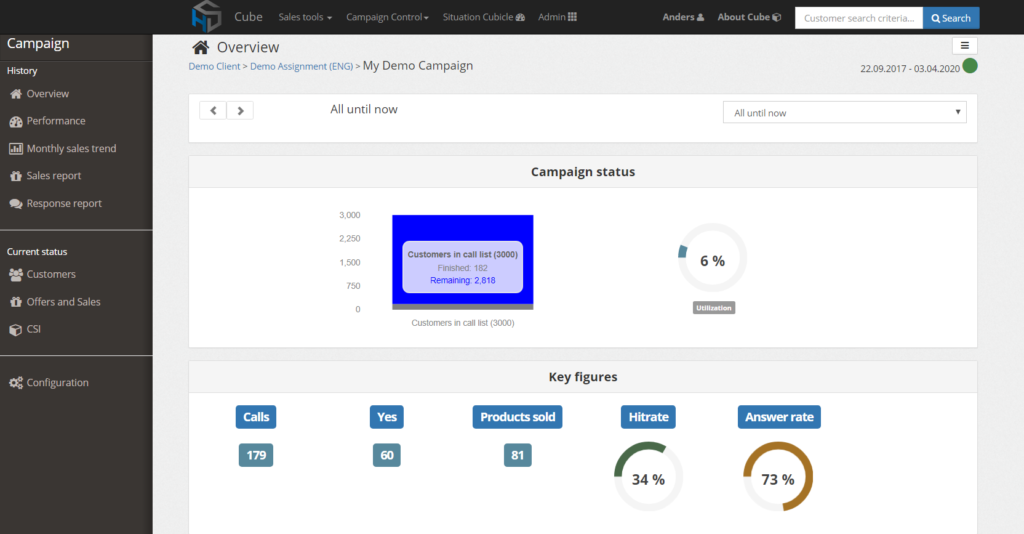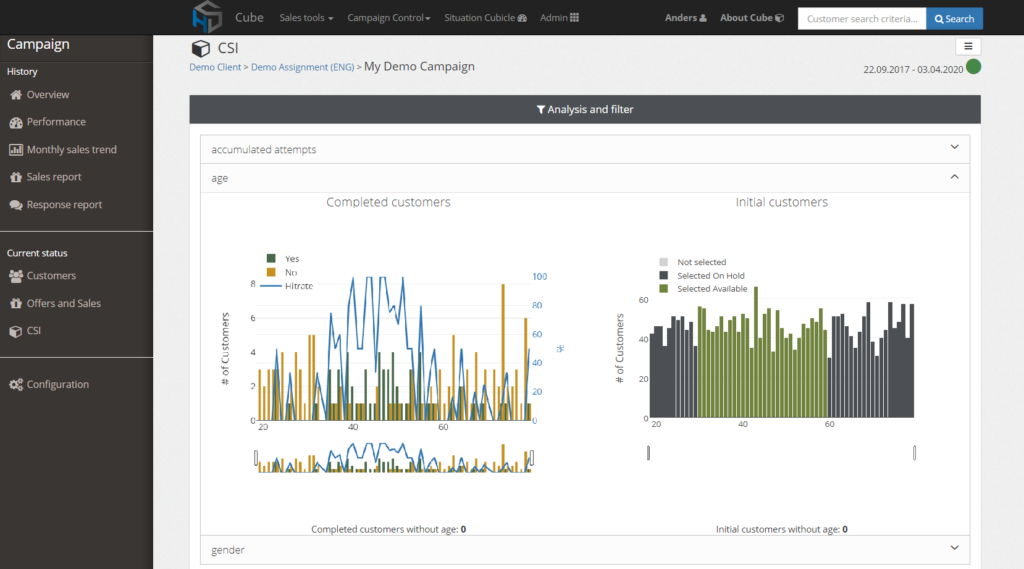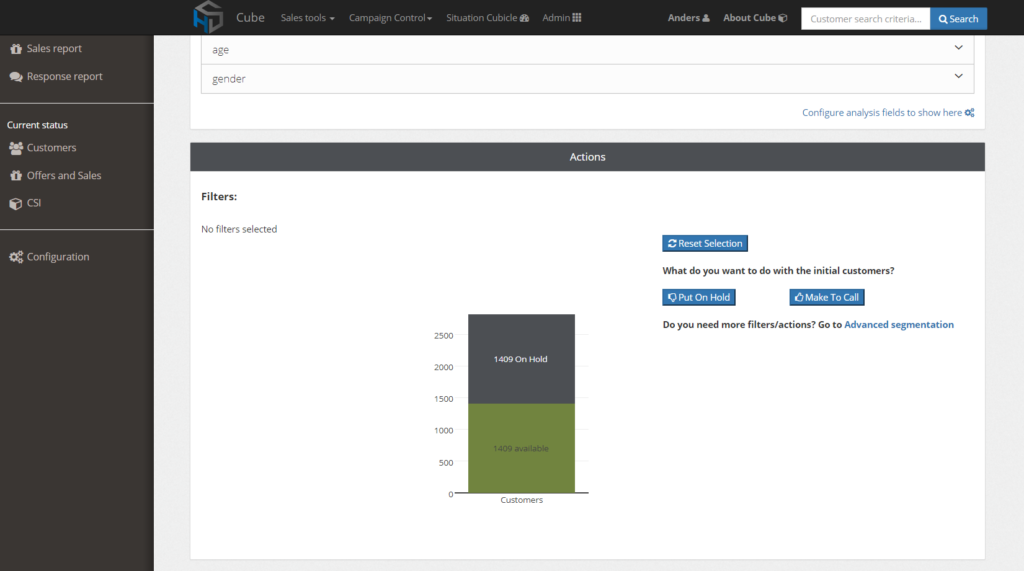The customer is always right. Right? But who is the right customer – and is anyone left?
As mentioned in a previous post, one of the key elements in everything we do is to make sure the customer is heard – that his or her feedback is taken into consideration for future sales channels, product development and marketing strategies.
How do we deliver on this right now, and how do we push the envelope further? How do we help you find the right customer and make the customer be right? We have a solution for that, and we call it
The Central Sales Intelligence (CSI)
Every single interaction with a customer has value. We log just about everything related to the execution of your sales and marketing campaigns, and this allows us to ask and try to answer all sorts of questions about customers. Let’s look at one example – let’s call her Maybee.
Did we have the correct information about her? How many attempts have been made to reach her? At what times and from what source? How many attempts did it take? How did she respond? Did she buy something? If so, what? If she didn’t buy anything, why? And what did she think about the process? She certainly knows these things, and as someone trying to cater to her, you should too.
Again: every single interaction with a customer has value. Headshed Cube includes automated analysis of customer interactions, which allows us to present our tenants with useful information, in real time. Here are a couple of examples:
- Who is buying (who is right)?
- Who is left, and what is their potential?
At some point you have gathered enough data to do some data driven decision making. This might sound complicated at first, but we’ve tried to make it easy for you. Here is an example:
Early in a telemarketing campaign, we are dissatisfied with the hitrate. A hitrate of 34% is not bad, but it could be better. Let’s investigate if we can optimize the campaign to improve the results.
Looking at completed customer interactions (on the left), we quickly see that there is a correlation between the age of customers and the hitrate. Customers between 30 and 60 seem to respond better. A glance at the remaining customers that we haven’t called yet (right side) reveals that we have a fair amount of these customers left. We decide to focus our efforts on these customers between 30 and 60 from now on and mark the age groups we want to put on hold (grey).
Putting the selected group (in this case, 1409 customers) on hold for this campaign means that we’ve reduced our available contact potential by 50 %. However, if the numbers stick, this should almost double our sales on the next round of calls, because these calls will be placed towards a target group proven more inclined to buy what we are selling. We can bring back the customers we’ve put on hold at any time, so there’s no damage in experimenting.
This is just an example, but illustrates the power in data driven sales and marketing. With over a million sales calls made already in Headshed Cube, we experience that our customers are learning a lot about their own customers and how to optimize their sales activities.
Can we interest you in some of our findings?
Stay tuned for the next CSI post, ‘Let’s talk about Gender, baby’. ?



